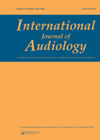
Journal Reviews
What do SLTs do in palliative care?
The authors of this article highlight that the number of older people has increased significantly in the last two decades, and the number of people over 85 has doubled in Australia since 1996. They attribute this to improved lifestyle factors...
What the people want and need: emerging service for communication needs in Ghana
There is a significant shortfall in rehabilitation service for people with communication difficulties across Majority World countries. It is known that many people in these countries are likely to seek help from a variety of sectors including western healthcare, religious...
Do it like a techy: telepractice in SLT for people with Parkinson’s disease
Parkinson’s disease (PD) is the second most common neurological condition in Australia, and communication difficulties are reported by 90% of people with the condition. Unfortunately, not all people with PD have access to speech and language therapy services due to...
Cochlear implants and speech perception
Cochlear implants can be an effective treatment for specific hearing losses. They may often be the only way to restore hearing for profoundly deaf people. Therefore, it is very important to understand all processes that may influence effective fitting of...
Socially appropriate part II: therapy for people with TBI
Social communication is a complex behaviour comprising social and cognitive communication skills. Providing speech and language therapy (SLT) interventions for people with social communication difficulties following traumatic brain injury (TBI) requires the clinician to understand how ingredients from an evidence-based...
Virtual human speaker
The aim of the discussed study was to develop and evaluate a 3D virtual speaker that could use pre-recorded audio-material and possibly be used for audio-visual speech testing in the future. The authors developed the terminal-analogue method that allows to...
Monitoring the mouth in ALS
Amyotrophic lateral sclerosis (ALS; or motor neurone disease) is characterised by gradual loss of function in the speech muscles resulting in a progressive deterioration in a person’s ability to communicate. The aim of this study was to investigate the use...
Speech perception in the ageing population
Speech perception can present a challenge as we grow older. One of the factors responsible is, of course, hearing loss. Now research indicates that other non-auditory factors like cognitive decline may also contribute to difficulties in understanding speech. The authors...
Improving palliative care training for speech pathologists
There has been a steady increase in the number of people with swallowing, communication and cognitive disorders requiring palliative care. They require specialised, and complex care. This study tries to find out whether speech language pathologists are adequately trained to...
Help or hinder: how and why do SLTs make clinical decisions around swallowing?
Dysphagia is a relatively common consequence of stroke, with estimates between 50% and 60% of people presenting with swallowing dysfunction following stroke. It is associated with pneumonia, malnutrition and dehydration which in turn lead to increased length of hospital admission,...
Directional microphones and speech
This study aimed to research how speech recognition, listening effort and localisation depends on hearing aids’ microphone configuration in people with moderate to severe hearing losses. Eighteen participants with sensorineural, symmetrical, moderate to severe hearing loss were tested. Participants were...
Planning for end of life care: is there a role for the speech and language therapist?
This article presents a scoping review of the research literature on the role of speech and language therapists in palliative care settings. The researchers conducted a search using several electronic databases focusing on palliative, terminal and end of life (EOL)...














